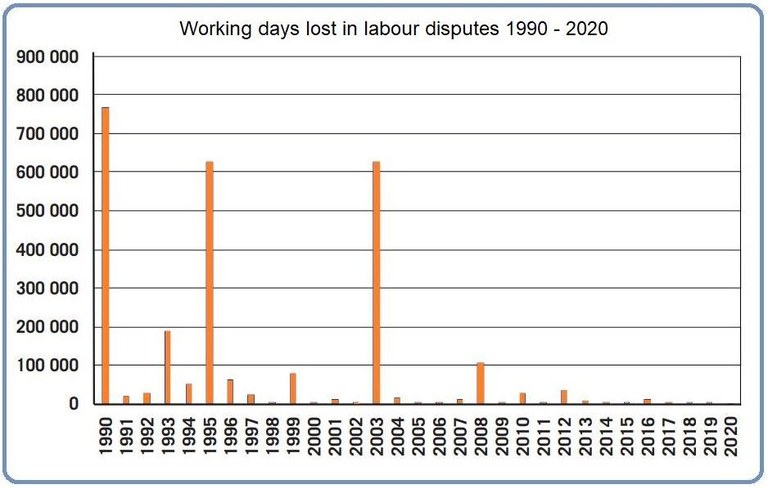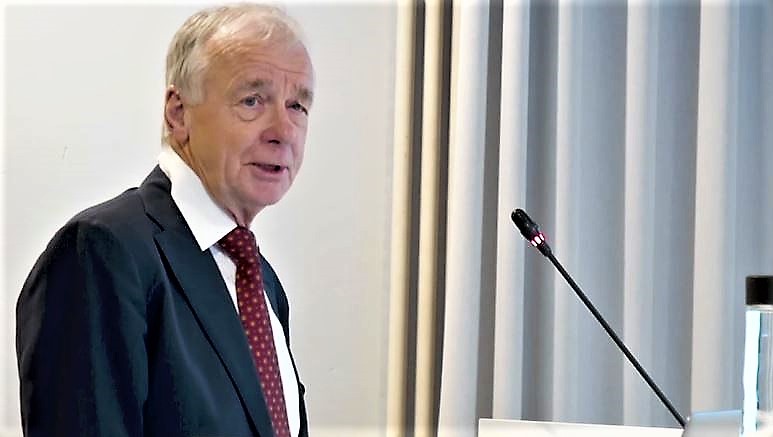Collective agreement extensions – the second best alternative?
Why is there so much resistance in the Nordics against the EU Commission directive on minimum wages? The answer is that the countries believe they have a nearly perfect system of collective agreements, so why change something that works? In many European countries where the social partners are weaker, extensions of collective agreements form an important part of the wage model.
In her opening speech at a Nordic conference on wage formation in Helsinki on 14 October, Minister of Employment Tuula Haatainen emphasised that wage formation based on collective agreement negotiations is an integral part of the Nordic welfare state. The success of the Nordic wage formation model in terms of social justice has been recognised both internationally and in the EU.
“Research shows that a strong culture of agreement and wage formation through negotiations support a society's success and competitiveness and reduce poverty among employed people,” Haatainen said.
This is about more than equal pay – it reduces the number of industrial disputes.
“Last year, not a single day’s work was lost to labour disputes. This has never happened before,” said Irene Wennemo, Director-General of the Swedish National Mediation Office.

The number of working days lost to industrial action. Source: The Swedish National Mediation Office
This could be the endpoint of a development that started in the 1920s and 1930s. Back then, Sweden saw more industrial action than most countries, and now the opposite is true, according to Irene Wennemo.
There are two important dates in this story. In 1928 it was decided that no industrial action should be taken once the partners had agreed to a collective agreement, and any disputes would be solved in a dedicated labour court. In 1938, employers agreed that wages would be set through collective bargaining – the so-called Saltsjöbad agreement.
“These agreements still mean a lot for the Swedish model,” said Irene Wennemo.
Other important dates are 1956, when coordinated negotiations were introduced, and 1997, the year of the Industrial Cooperation and Negotiation Agreement which gave export industries a leading role in the wage formation process.
Collective agreements are considered the norm in the Nordic region, and it is often understated quite how different the Nordic model really is. 
Jelle Visser, Professor at the University of Amsterdam. Photo: Niva.
Sectoral bargaining does not exist outside of Europe, except in South Africa and Argentina. It is a very rare thing, pointed out Professor Jelle Visser from the University of Amsterdam. He is one of Europe’s leading experts on collective agreement negotiations.
Visser has edited a book on the extension of collective agreements together with Susan Hayter. It is published by the International Labour Organisation.
When Jelle Visser gave a quick introduction to how wage formation works in Europe, the most striking thing was the differences. No one model dominates, but in all the countries wage negotiations happen on different levels, both within sectors and locally in the workplace.
National agreements are rare. Belgium is the exception, where there is a national wage level ceiling. By law, wages cannot increase beyond the average wage increases in the Netherlands, France and Germany.
“The minimum wage is in turn decided by an inflation index, but the Belgian system is very unusual,” pointed out Jelle Visser.
The most common solution is sector-based agreements which are adjusted through local negotiations in the workplace – but here too there are exceptions. In the Netherlands, collective agreements allow for individual choices based on your own situation. Anyone is free to choose between shorter hours or higher pay.
“The most common solution is that local negotiations can only lead to better conditions than the ones that apply to an entire sector. But in Spain employers can also negotiate conditions that are worse, in which case the local agreement takes precedence over the one covering the sector. This is, of course, very problematic for the trade unions.
Weaker unions
Trade union membership in the private sector has fallen across Europe. According to researcher Lawrence Summer, a former advisor to Presidents Clinton and Obama, the past 20 to 30 years have seen a structural weakening of trade unions. There are three main reasons:
- There has been a negative political attitude towards trade unions since 1980, especially in countries like the USA and the UK.
- Shareholders have gained more power, limiting wage growth.
- Many of the jobs that have had high union membership numbers face competition from both robots and AI, as well as from low-wage countries.
Jelle Visser showed a graph of collective agreement coverage in the private sector in 21 OECD countries, marked with blue columns. Austria is top with nearly 100%, while the USA is bottom. The tall columns to the left are countries where the extension of collective agreements play an important role.

Only Denmark and Sweden have both high collective agreement coverage (blue columns) while more than 60% of private sector employers (red square) and the employees (yellow square) are organised.
The extension of collective agreements means trade unions and employers negotiate an agreement that the state then decide will cover an entire sector.
The yellow squares show how many of the employees are unionised, while the red square shows how many employers are members of an employers’ organisation.
Sweden and Denmark are the only countries where more than 60% of employers are organised. Even more employees are organised in these two countries. If Iceland was included, the country would have ended up in the same group, while Finland, where the extension of collective agreements is commonplace, falls into the group with the highest coverage.
Norway, along with Germany, has lower collective agreement coverage, only partly compensated for by the extension of collective agreements in some sectors with a high level of foreign labour.
“Undoubtedly, the extension of collective agreements has a stabilising effect on the institution of collective bargaining,” concluded Jelle Visser.
But his presentation also shows how isolated Denmark and Sweden are in their fight against statutory minimum wages in Europe. The “perfect” collective agreement model really only exists in these two countries.
- Conference on wage formation
-
Irene Wennemo, Director-General of the Swedish National Mediation Office, and Finland’s Minister of Employment, Tuula Haatainen, exchanged experiences at the conference on wage formation in Helsinki, hosted by Finland which holds the Presidency of the Nordic Council of Ministers.
 Follow us on Facebook
Follow us on Facebook
